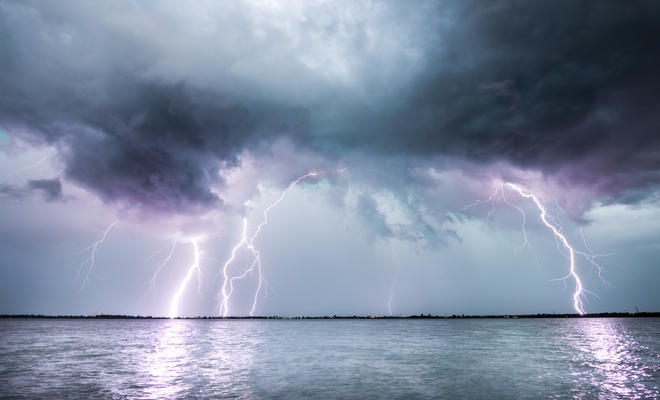Book Review: How to Avoid a Climate Disaster by Bill Gates

Bill Gates’ How to Avoid a Climate Disaster is an engaging and readable overview of the world’s climate crisis and the best ways to address it.
The book is digestible and breaks down seriously complex topics using plain language, analogies, and basic statistics. Gates uses the knowledge he collected from ten years of researching climate change to explain what the crisis is, why it's happening, and how we can solve it (if we really try).
My only criticism of the book is that the chapters becomes harder to read as they progress, and the information in the final two chapters is repetitive.
Gates clearly put effort into keeping the language about science and technology (which is the focus of the first few chapters) simple and lucid, but the discussion of politics and markets (in the final few chapters) is much harder to follow.
But overall, the book is an accessible and comprehensive intro to the earth’s intensifying climate disaster.
Here are 8 important takeaways:
1. Transitioning from dependence on fossil fuels to clean energy will be difficult
Why?
Because...
- We’ve spent decades building up extensive and costly fossil fuel infrastructure
- Clean energy comes with expensive “Green Premiums” — added costs of using clean energy
- Companies lack incentives to invest in clean energy
- There's a lack of political consensus on local, national, and international levels
2. To make a big impact, we need big systemic changes
We need changes to energy infrastructure, R&D funding for clean energy, market incentives to invest in and use clean energy, and policies and regulations in favor of clean energy use.
And all of these changes need to be driven by government, big companies, and international cooperation.
3. The best way for individuals to make an impact is to get involved politically and locally
Personal actions like reducing your home’s emissions, driving an electric vehicle, and eating less meat are good places to start, and valuable because they send signals to a market ruled by supply and demand.
But most of our emissions come from larger systems that rule how we get and use energy on a daily basis. And replacing these systems requires political action, which is why getting involved in the political process is the best way for individuals to make an impact on the climate crisis.
Voters need to demand that elected officials adopt plans for climate change. Make your voice heard by doing the following:
- Make calls, write letters, and attend town halls: Know where elected officials stand, ask them questions, and make clear that climate policies will help determine how you vote. Demand more funding for clean energy R&D, a clean energy standard, a price on carbon, incentives for cutting emissions, or other policies
- Look locally as well as nationally: For example, in the United States, most electricity is regulated by statewide public utility commissions made up of either elected or appointed commissioners. Find out who your representatives are and contact them
- Run for office: You can probably have the most impact by running for state or local office
4. Emissions mostly come from five major activities
- Making things (cement, steel, plastic) 31%
- Plugging in (electricity) 27%
- Growing things (plants, animals) 19%
- Getting around (planes, trucks, cargo ships) 16%
- Keeping warm and cool (heating, cooling, refrigeration) 7%
Again, most of our emissions come from large systems, like the very infrustructures we rely on for getting and using energy every day. Switching to metal straws and planting trees isn't enough.
5. Planting trees doesn’t actually do much to help offset emissions
If you do the math, you’d need to plant (and maintain) enough trees to cover roughly half the landmass of the world to offset just Americans’ emissions.
Trees have aesthetic and environmental value, and we should be planting more of them, but there isn’t a practical way to plant enough of them to deal with the problems caused by burning fossil fuels. A more effective approach is to stop cutting down so many of the trees we already have.
6. We need to aim for net zero emissions by 2050, instead of just reduced emissions by 2030
And these goals have very different tracks. Making reductions by 2030 the wrong way might prevent us from ever getting to zero.
We need to adopt policies that will put us on a path to deep decarbonization by 2050, not just fewer emissions by 2030. And if we’re going for the long-term goal it will take time to see improvements.
7. Poor countries contribute to emissions the least, but are hit the hardest
People and farmers in poorer countries need help adapting to climate change, particularly in agriculture. Agricultural research is chronically underfunded. Doubling CGIAR’s (Consortium of International Agricultural Research Centers) funding so it can reach more farmers is one of the main recommendations by the Global Commission on Adaptation.
8. Climate change is already very deadly and getting worse
Droughts, floods, rising temperatures, extreme weather events, etc. driven by global warming already devastate people and economies.
By mid-century, increasing global temperatures are projected to raise global mortality rates by 14 deaths per 100,000. By the end of the century, if emissions growth stays high, climate change could be responsible for 75 extra deaths per 100,000 people.
These statistics mean that by mid-century, climate change may be just as deadly as COVID-19, and by 2100 it may be five times as deadly.
In short
If you’re like me and you’ve read all the scary news about climate catastrophe but still don’t quite have a grasp on the big picture, this book is a great place to start.
How to Avoid a Climate Disaster explains what the climate crisis is, why it's happening, and how we can try to stop it (or at least slow it down) — using clear and readable language.
